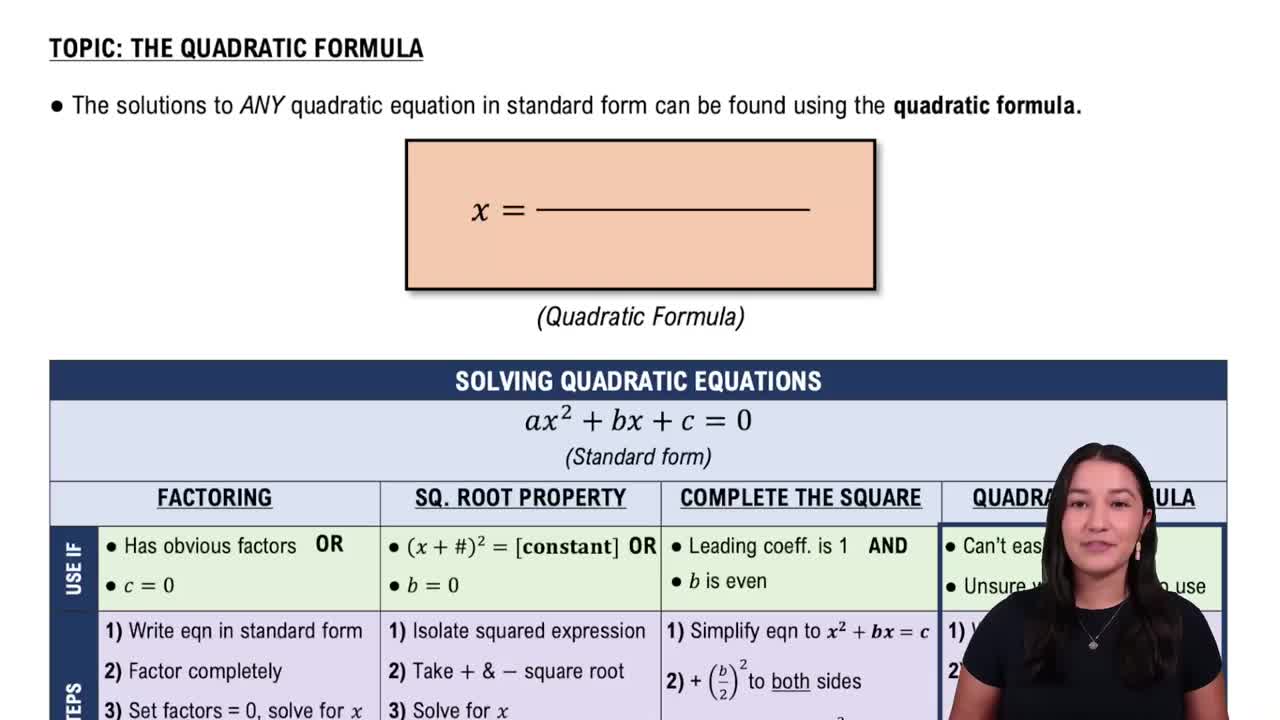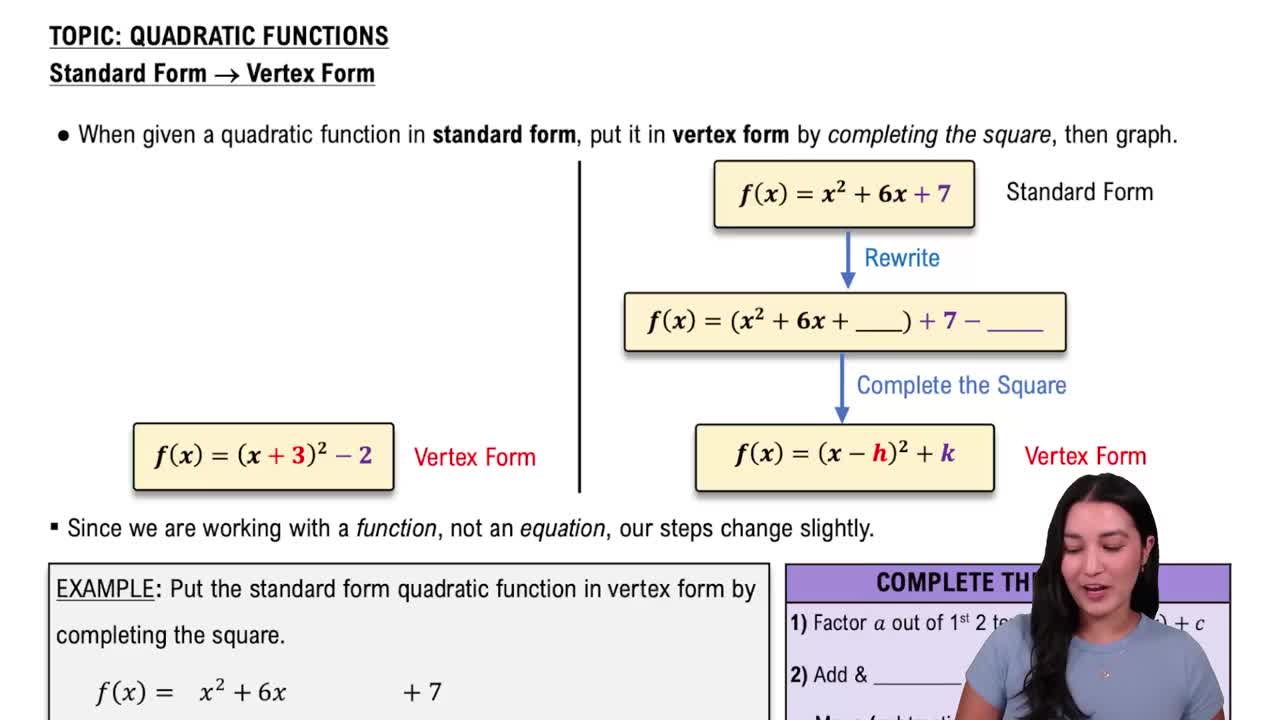Table of contents
- 0. Review of Algebra4h 16m
- 1. Equations & Inequalities3h 18m
- 2. Graphs of Equations43m
- 3. Functions2h 17m
- 4. Polynomial Functions1h 44m
- 5. Rational Functions1h 23m
- 6. Exponential & Logarithmic Functions2h 28m
- 7. Systems of Equations & Matrices4h 6m
- 8. Conic Sections2h 23m
- 9. Sequences, Series, & Induction1h 19m
- 10. Combinatorics & Probability1h 45m
4. Polynomial Functions
Quadratic Functions
Problem 81
Textbook Question
Find a value of c so that y = x^2 - 10x + c has exactly one x-intercept.
 Verified step by step guidance
Verified step by step guidance1
<insert step 1> Start by understanding that a quadratic equation has exactly one x-intercept when its discriminant is zero. The discriminant \( \Delta \) of a quadratic equation \( ax^2 + bx + c = 0 \) is given by \( \Delta = b^2 - 4ac \).
<insert step 2> Identify the coefficients from the given equation \( y = x^2 - 10x + c \). Here, \( a = 1 \), \( b = -10 \), and \( c = c \).
<insert step 3> Substitute these values into the discriminant formula: \( \Delta = (-10)^2 - 4(1)(c) \).
<insert step 4> Set the discriminant equal to zero for the equation to have exactly one x-intercept: \( 100 - 4c = 0 \).
<insert step 5> Solve the equation \( 100 - 4c = 0 \) for \( c \) to find the value that makes the discriminant zero.
Recommended similar problem, with video answer:
 Verified Solution
Verified SolutionThis video solution was recommended by our tutors as helpful for the problem above
Video duration:
3mPlay a video:
Was this helpful?
Key Concepts
Here are the essential concepts you must grasp in order to answer the question correctly.
Quadratic Functions
A quadratic function is a polynomial function of degree two, typically expressed in the form y = ax^2 + bx + c. The graph of a quadratic function is a parabola, which can open upwards or downwards depending on the sign of 'a'. Understanding the properties of quadratic functions is essential for analyzing their intercepts and vertex.
Recommended video:

Solving Quadratic Equations Using The Quadratic Formula
X-Intercepts
X-intercepts are the points where a graph crosses the x-axis, which occur when the output value (y) is zero. For a quadratic function, the x-intercepts can be found by solving the equation ax^2 + bx + c = 0. The number of x-intercepts is determined by the discriminant (b^2 - 4ac) of the quadratic equation.
Recommended video:
Guided course

Graphing Intercepts
Discriminant
The discriminant is a key component of the quadratic formula, given by the expression b^2 - 4ac. It determines the nature of the roots of the quadratic equation: if the discriminant is positive, there are two distinct real roots; if it is zero, there is exactly one real root (a repeated root); and if negative, there are no real roots. For the quadratic to have exactly one x-intercept, the discriminant must equal zero.
Recommended video:

The Discriminant

 7:42m
7:42mWatch next
Master Properties of Parabolas with a bite sized video explanation from Callie
Start learningRelated Videos
Related Practice













